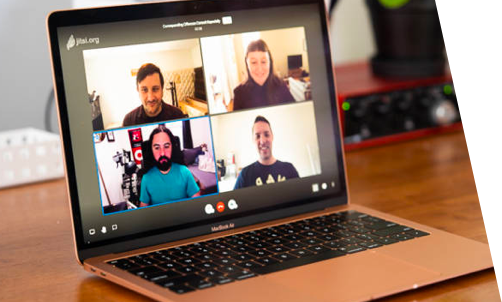
Imagine this scenario: You've just left a meeting with a client. As you enter the elevator, someone calls, “Wait, hold it, please!” You hold the elevator door open with your notebook and, in steps, a potential client you've been eager to speak with for a long time. He asks you what your new company does. You open your mouth, then pause... where on earth do you start? Before you know it, the elevator stops, and he’s on his way. You could have intrigued him enough to schedule a meeting if you'd been better prepared.
Encounters like these happen every day. Whether by design or luck, you might find yourself face-to-face with someone who can help you achieve your goals. Unfortunately, many people are unprepared for such moments. They haven’t considered what they would say or prepared something to say. Instead of capitalising on the opportunity, they let it slip away.
Our goal today is to ensure you know how to handle yourself in this situation. If you have just a minute or two to catch someone's attention, you will know what to say and how to say it. It means developing an elevator pitch.
What is an Elevator Pitch, and Why Do You Need One?
An elevator pitch is a concise, persuasive speech that you use to spark interest in what you do. Seth Godin said, “The purpose of an elevator pitch is to describe a situation or solution so compelling that the person you’re with wants to hear more even after the elevator ride is over.” Many people fail to deliver an effective elevator pitch because they don’t understand its purpose. The goal is not to close the deal but to pique the listener’s interest enough to continue the conversation.
Creating Your Elevator Pitch
Creating an effective elevator pitch involves several key steps:
- Understand Your Objective: Start by thinking about the goal of your pitch. Do you want to inform potential clients about your organisation? Or do you want them to know about a new product idea? Example: If you're launching a new app for university lecturers, your objective might be to raise awareness about how it can help lecturers engage their students.
- Know Your Audience: Tailor your message to your specific audience. Know who you’re talking to, why you’re talking, and what outcome you desire. Example: If your target audience is academic leaders, potential investors, and recruits, your message will differ slightly for each group.
- Identify the Problem: Think about the significant challenge your audience faces. How does your product or service address this problem? Example: University lecturers need help engaging students distracted by social media. Your app helps improve classroom engagement by integrating social media into learning.
- Present Your Solution: Clearly state how your product or service solves the problem. Avoid technical jargon and be concise. Example: "Our app helps professors improve classroom engagement by 200% by enabling students to participate through social media."
- Include a Call to Action: End with a clear call to action tailored to your audience. What do you want your audience to do next? Example: "I’m looking for academic leaders who can use our technology.

Putting It All Together
Here’s a sample elevator pitch combining all these elements:
"I’m Jane Smith, an app developer with Marcomm. We help lecturers like you reconnect with their students to deliver better results. We’ve built a platform that enables students to participate and learn through social media. I’m here to meet academic leaders to see how we can help your teams."
This pitch is about 50 words; you can deliver it in around 30 seconds.
Characteristics of an Effective Elevator Pitch
An effective elevator pitch should be:
- Clear and Concise: Avoid jargon and keep it simple.
- Engaging: Start with a hook to grab attention.
- Tailored: Customise your pitch based on your audience.
- Value-Focused: Highlight the benefits you provide.
- Action-Oriented: End with a specific call to action.
Practice Makes Perfect
Once you’ve crafted your pitch, practice it until it feels natural. Rehearse it out loud, get feedback, and refine it. Remember, you must adapt your pitch for different audiences or situations.
Using Your Elevator Pitch in Different Scenarios
Elevator pitches are not just for face-to-face meetings. You can use pitches:
- At networking events
- In your social media bios
- In the footer of your emails
- Throughout your website content
Engaging Your Audience Post-Pitch
After delivering your pitch, shift the conversation to learn more about the other person. Use open-ended questions to encourage them to share more about themselves. This will demonstrate your interest and can help build a stronger relationship.
Active Listening
Effective communication isn’t just about talking; it’s also about listening. Show that you’re engaging by using active listening techniques, such as nodding, making eye contact, and responding appropriately.
Conclusion
Crafting and delivering an effective elevator pitch takes practice, but it’s a crucial skill for anyone looking to make a lasting impression quickly. Understand your objective, know your audience, identify the problem, present your solution, and include a clear call to action. Doing this allows you to create a pitch that opens doors and creates opportunities. Take the time to develop your pitch, practice it, and get out there and use it. Good luck!

